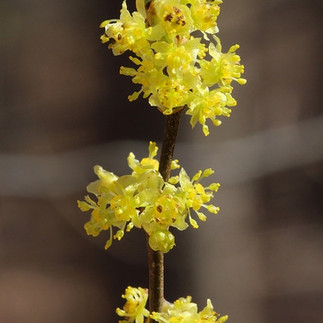Say - No, No, Nandina
- Mecklenburg Audubon
- Feb 20, 2024
- 2 min read

Recently the Raleigh News and Observer published an article about the plant - Nandina (a.k.a. Heavenly Bamboo), and its toxic qualities. It is true the U.S. Department of Agriculture and most states classify Nandina domestica as a noxious, non-native, invasive plant. But when it comes to its effects on birds the issue is complicated.
According to a recent study by a researcher at the UNC-Chapel Hill Herbarium, the leaves and green, unripe berries of the plant are highly cyanogenic (cyanide-producing). When damaged or eaten both leaves and green fruits can release large quantities of cyanide which can kill quickly. On the other hand, the red, ripe fruits release their cyanide slowly and the longer they remain on the plant (2 or more months) the less toxic they become.

So, what about the reports of Cedar Waxwings dying from eating the berries? Indeed, there is evidence from research at the University of Georgia’s College of Veterinary Medicine that these birds have died from ingesting the berries. Cedar Waxwings are notorious for descending on a tree or bush with red berries and striping it of the berries in a short period of time. Because they tend to gorge themselves on the berries, they wind up ingesting large quantities of the toxin which can kill them. Other birds sampling the berries usually one take one or two and find they don’t agree with them. After that they avoid the plant. If there is an abundance of other native foods in the area that Cedar Waxwings prefer, such as Eastern Red Cedar, they will totally ignore the Nandina. I had a large Nandina outside a window that birds used constantly for preening and shelter, but I never saw any of them eat the berries, not even the greedy Mockingbird.
What should a bird lover/gardener do about Nandina? It is true the plant is evergreen and provides nice greenery in the winter. If you already have the plant in your garden and want to keep it, you should cut the flowers when it’s in bloom to prevent the formation of berries and/or remove the berries when they form. There are now some cultivars that don’t produce berries and are not as invasive.
Or you could just remove the plant completely, which may take a bit of effort. This is what I have done. Why tempt fate? In its place, use native plants like the red or white cedar which Cedar Waxwings love. If you don’t have space for the trees try these shrub alternatives, all of which grow nicely in our area:
Spicebush Eastern Wahoo Possumhaw
Possumhaw (Ilex decidua)
Highbush Blueberry (Vaccinium corymbosum)
American Beautyberry (Callicarpa americana)
Eastern Wahoo (Euonymus atropurpureus)
Virginia Sweetspire (Itea virginica)
Arrowood Viburnum (Viburnum dentatum)
Hearts A’busting Bush (Euonymus americanus)
Spicebush (Lindera benzoin)
Red Chokeberry (Aronia arbutifolia)
For more information check out these sites:









Commentaires